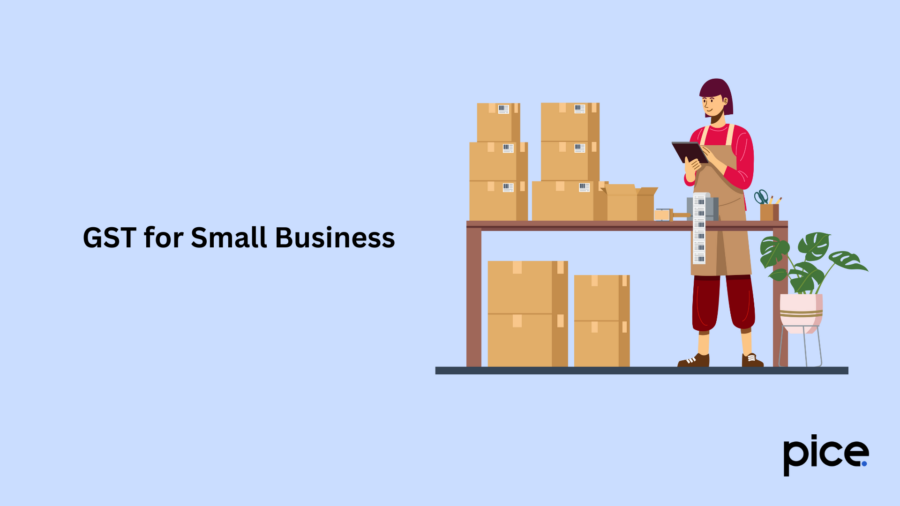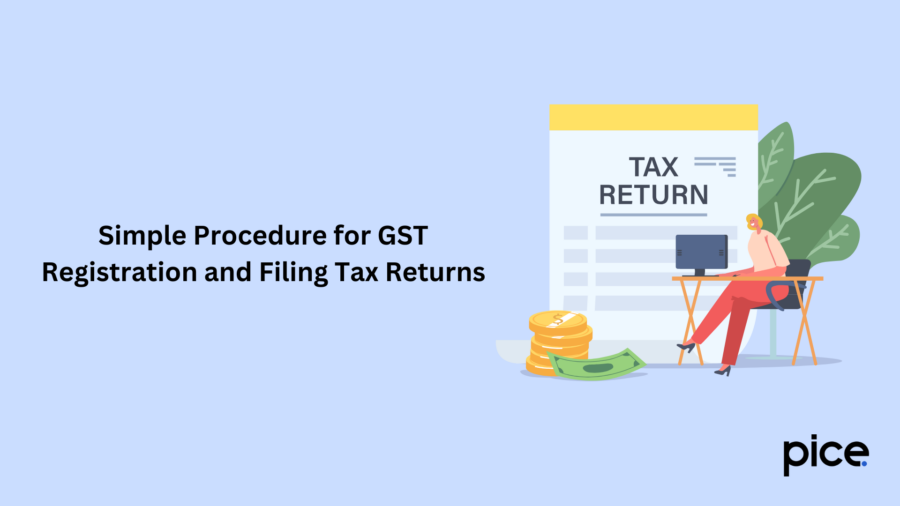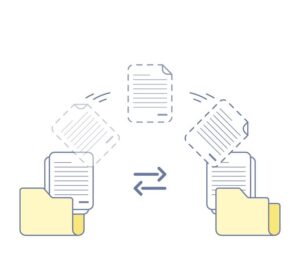GST for Vendors: Minimum Turnover, New Rules & Benefits
- 17 Dec 24
- 8 mins

GST for Vendors: Minimum Turnover, New Rules & Benefits
Key Takeaways
- Simplified compliance with a single GST registration.
- Input tax credit reduces overall tax liability.
- Elimination of check posts improves logistics efficiency.
- Upfront GST payments increase working capital needs.
- GST streamlines operations, boosting business growth.
Under the GST law, there is a levy of tax on all taxable supplies made within a defined period by the taxpayer. For intrastate supply of goods and services, both CGST and SGST are applicable, while for inter-state supplies, IGST is charged by the taxpayer when issuing the payment of invoice.
To comply with GST for vendors, a small business must be registered under the GST Act and submit the necessary GST returns.
GST for Small Business

GST registration is mandatory for small businesses supplying goods with annual turnover over ₹40 lakh. In Arunachal Pradesh, Manipur, Meghalaya, Mizoram, Nagaland, Puducherry, Sikkim, Telangana, Tripura and Uttarakhand, the limit is ₹20 lakh.
For service providers also, registration is required as the turnover exceeds ₹20 lakh and ₹10 lakhs for services rendered in Manipur, Mizoram, Nagaland and Tripura. The GST composition scheme offers a lower tax rate for businesses with a turnover limit of ₹1.5 crore.
How GST Helps Startups and Small Businesses?
Let us understand how GST helps startups or small businesses by looking at pre-GST and post-GST scenarios:
Pre-GST Example of VAT
Suppose a startup purchases furniture for its office at a cost of ₹60,000, incurring a VAT of 5% on the transaction. Later, it offers selling services to a client for ₹1,00,000, at a 15% service tax. This makes the total payment of tax the startup would be expected to pay in that instance if no VAT or service tax adjustments were made.
| Service tax applicable on supply of services | 1,00,000 × 15% = ₹15,000 |
| VAT incurred on purchasing office supplies | 60,000 × 5% = ₹3,000 |
| Total indirect tax paid | ₹18,000 |
Post-GST Example of Tax Credit on Purchases
A small business purchases office equipment worth ₹60,000 with a GST of 18% and provides selling services to a client for ₹1,00,000 with a GST of 12%. Here is how the business can utilise the input tax credit under GST:
| GST charged on services rendered | 1,00,000 × 12% = ₹12,000 |
| Less: GST paid on office supplies purchased | 60,000 × 18% = ₹10,800 |
| Net GST payable | ₹1,200 |
What Are the Advantages of GST for Startups?
Here are some advantages of GST for startups:
- Decreases the impact of tax accumulation, as GST removes the various taxes applied at different points in production and distribution
- GST has significantly improved logistics and transportation services, boosting the overall efficiency and competitiveness of domestic manufacturers
- By creating a unified tax framework, GST reduces business compliance complexities and levels the playing field for businesses.
What Are Some GST Hurdles for Startups?
The following are some GST hurdles for startups:
- Startups face increased working capital requirements as they must pay GST upfront on inputs and claim the input tax credit later.
- Filing monthly returns and maintaining detailed transaction records has increased operational expenses.
- Many small and medium enterprises struggle with understanding GST rules and procedures, creating confusion and delays.
The Impact of GST on Small Businesses & Startups
The following are the impact of GST on small businesses and startups:
- No Need to Maintain Multiple Warehouses
GST simplified operations for startups by removing the need for state-specific warehouses. With no inter-state tax on goods movement, logistics companies could centralise warehouses, reducing storage, inventory and maintenance costs, while improving warehouse management.
- Elimination of Check Posts, Tolls and Border Inspections
GST removed check posts, tolls, and border inspections, streamlining inter-state goods movement, reducing delays, logistics costs and boosting efficiency. It also enhanced customer satisfaction by enabling smoother and faster delivery. Additionally, GST registration for online businesses has facilitated the seamless movement of goods across states without barriers.
- Tax Burden for Manufacturing Startups
Under previous excise laws, manufacturing businesses were required to pay excise duty only if their yearly turnover limit exceeded ₹1.5 crore. However, GST lowered the turnover limit to ₹20 lakh, increasing the tax burden for many manufacturing startup businesses. This shift has presented challenges for these businesses as they adapt to the new tax system and ensure business compliance with GST regulations.
- Reduction in Compliance Cost for Businesses
GST benefits startups and small businesses by reducing tax complexities, allowing them to focus on operations and innovation. It simplifies processes such as filing returns and claiming input tax credit by centralising the system. This reduces the risk of corruption and tax evasion while enhancing transparency and accountability in taxation.
- Ease of Doing Business with Single Registration
GST simplifies the enrollment process as businesses can simply register under one authority avoiding state-specific registrations. Less paperwork, duplication and compliance costs will be associated with it. This makes the startups scale up to the whole nation. Through one tax registration, companies can have access to more customer base in the integrated market.
Simple Procedure for GST Registration and Filing Tax Returns

Follow this step-by-step procedure to perform GST registration online:
Step 1: Log in to the official GST portal.
Step 2: Enter basic details such as email and mobile number.
Step 3: Generate a Temporary Reference Number (TRN) to access your application later.
Step 4: Fill out details about your business, such as its name, address, business owners, partners, etc.
Step 5: Specify the person liable to sign GST-related documents.
Step 7: File the supportive documents along with the application.
Step 8: Perform confirmation of the given details either through OTP and DSC and submission.
Step 9: At the end of submission, one shall get a reference number which is the Application Reference Number (ARN).
Step 10: Once approved, your GSTIN will be issued.
Online Simpler Procedure Under GST
Even under GST registration, one can apply online and file returns while paying tax electronically with easy compliance and allowing expansion into a larger audience base with the support from GST.
Offences and Penalties Under GST for Evading the New GST Rules
The following mentions the penalties under GST for different types of offences:
| Types of Offence | Penalty Amount |
| Failure to register under GST | A penalty of 10% of the tax due or ₹10,000, whichever is higher. |
| Failure to issue invoices | |
| Failure in return filing | |
| Fraudulent activities | |
| Delay in filing GST returns | A late fee of ₹100 per day is charged under the CGST Act, and ₹100 per day under the SGST Act. The maximum late fee is capped at ₹5,000. |
| For choosing the composition scheme without meeting eligibility criteria | If fraud is detected (under Section 74), a penalty of 100% of the tax owed or ₹10,000, whichever is greater, will be imposed.If there is no fraud, a penalty of 10% of the tax due or ₹10,000, whichever is higher, will apply. |
| Incorrectly applying a higher GST rate | A penalty of 10% of the tax owed or ₹10,000, whichever is greater, will be imposed if the extra GST collected is not remitted to the government. |
| Incorrectly applying a lower GST rate | An interest rate of 18% p.a. will be charged on the GST deficit |
| Submitting incorrect GST returns | |
| Issuing incorrect invoices | ₹25,000 as penalty |
| Charging wrong type of GST | No penalty will be imposed in this situation. Businesses can pay the correct GST and claim a refund for the incorrectly paid GST. |
Conclusion
GST for vendors has simplified business operations by unifying tax systems and streamlining compliance. Businesses can now reduce administrative burdens and expand more efficiently with a single registration. Knowing the rules and taking advantage of GST can significantly enhance business growth and operational efficiency.
💡If you want to streamline your payment and make GST payments, consider using the PICE App. Explore the PICE App today and take your business to new heights.
 By
By 
















